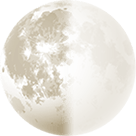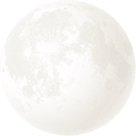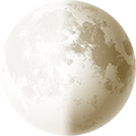What to See in the Night Sky - January 2023January 2023 astronomy events calendar shows you what to see in the night sky including the Comet C/2022 E3 ZTF, meteor showers and planets.
January Moon Phases
January's full moon is called the Wolf Moon after the howling of hungry wolves lamenting the scarcity of food in midwinter. Other names for this month's full moon include old moon and ice moon.
Full Moon and New Moon for January 2023

January 2023 Full MoonSat 7th Jan

January 2023 Last QuarterSun 15th Jan

January 2023 New MoonSun 22nd Jan

January 2023 First QuarterSun 29th Jan
Comet C/2022 E3 ZTF
Comet C/2022 E3 (ZTF) has been dubbed as a "once-in-a-lifetime" experience, and it could be bright enough to become visible to the naked eye at the end of January 2023.
Comet C/2022 E3 (ZTF) is a long-period comet which was discovered by the Zwicky Transient Facility. It is positioned high in the northern sky when it's at its best and will move quickly as it drifts past the North Star, Polaris.
The comet will reach its perihelion on January 12, 2023, at a distance of 1.11 AU (166 million km) and the closest approach to Earth will be on February 1, 2023, at a distance of 0.28 AU (42 million km). The comet is expected to get brighter than magnitude 6 and thus become visible with the naked eye from a dark sky site, appearing as a smudge in the sky.

January Planets
Mercury will be at its "greatest eastern elongation", the highest point above the horizon in the western sky, on the evening of 30th Jan. On the 19th Mercury will be relatively close to the crescent moon. Look 14 degrees east of the moon before sunrise and you should see Mercury as a pinkish-white star.
Venus is always brilliant, shining with a steady, silvery light. Mornings in the eastern sky at dawn from early January through to mid-June. Venus and Saturn are drawing together in January and will be 1/3 degree apart on the 22nd and is the closest naked-eye planetary conjunction of the year. Look west-southwest to see Venus shining brightly and you'll see Saturn slightly to its right. The crescent moon will be directly underneath.
Mars is visible in the night sky from January to mid-July, then shifts to the morning sky from mid-Oct to the end of December. On the 3rd of January, the Moon and Mars will be close together in the evening sky.
Jupiter will be visible in the mornings from January to May, evenings from May to November, and mornings again from mid-December to the end of December.
Saturn is visible in the mornings from late January to early July, and then in the evenings from July to December. On the 21st/22nd, Venus will be close to Saturn.
January Meteor Showers
The Quadrantid Meteor Shower is an above-average shower, with up to 40 meteors per hour at its peak. It is thought to be produced by dust grains left behind by an extinct comet known as 2003 EH1, which was discovered in 2003. Meteors will radiate from the constellation Bootes but can appear anywhere in the sky.

For 2023 the Quadrantid meteor shower coincides with a full moon, meaning that there will not be dark skies and the meteor shower will be much more difficult to view. If you want to try and observe the Quadrantids, the best time would be on the morning of the 3rd Jan before dawn.
January Deep Space Objects
The Orion Nebula (M42) is well placed in the South East along with the Hyades and Pleiades star clusters. See if you can differentiate the colour difference between red/orange Betelgeuse and blue Rigel, Orion's left shoulder and right knee.
A short hop into neighbouring Auriga will bring you to the three exquisite open clusters - M36, M37 and M38 all of which can be spotted with binoculars and lie in the region between Beta Tauri and Delta Aurigae.
With dark skies, you should be able to spot the double cluster Perseus with the naked eye. It's another great target for small telescopes and consists of the clusters NGC 869 and NGC 884.
The Andromeda galaxy is a favourite of mine, directly overhead in December and slowly setting towards the west during January and into February. This large galaxy can be seen as a faint fuzzy blob with the naked eye under dark skies, but it's best to see through binoculars. Through a telescope, the Andromeda Galaxy looks quite diffuse. Use your lowest power; the full extent of the galaxy is huge - five times as large as the full moon. It is the most distant object you can see with your naked eyes being two million light years away.













